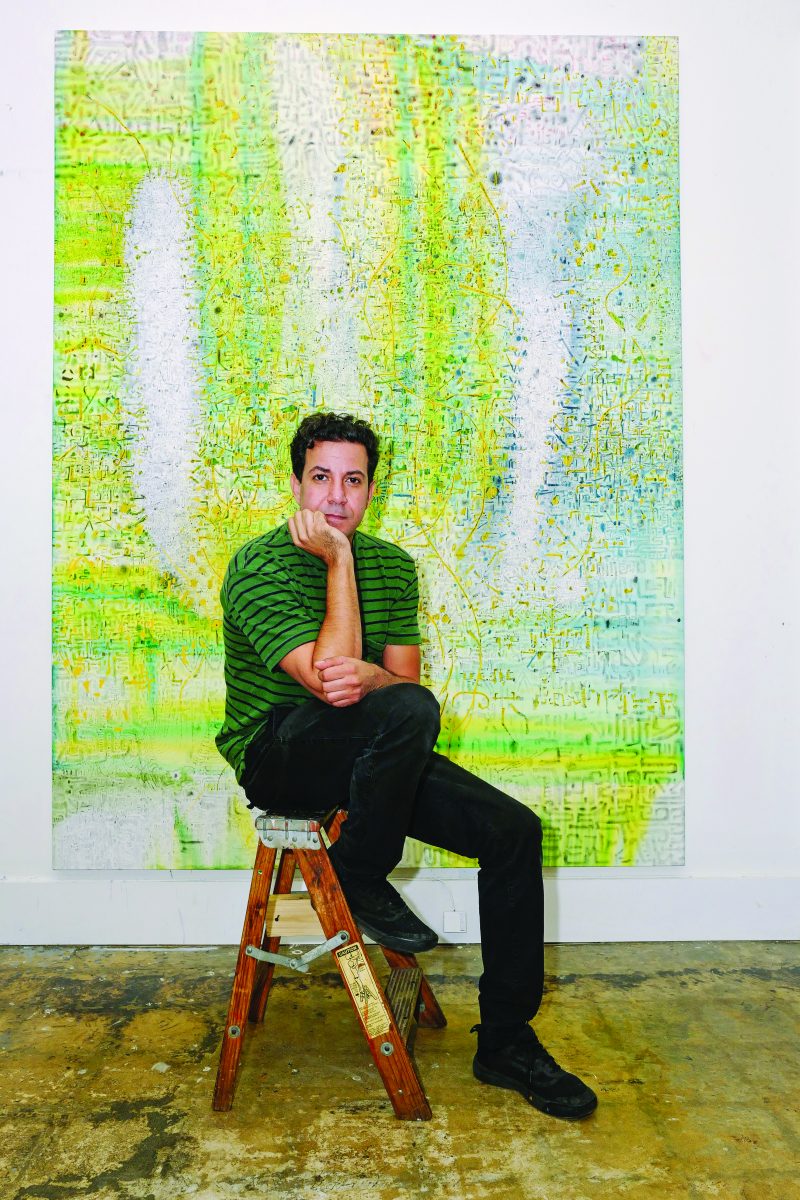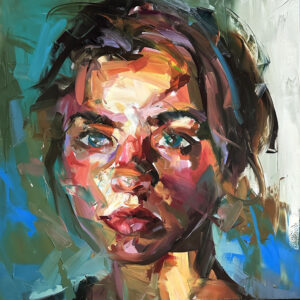
Abstract painter Tomm El-Saieh overflows with identity markers—a Haitian childhood, a Miami upbringing, a Palestinian-Haitian father, an Israeli mother, his grandfather’s Vodou-jazz big band, and Saieh, an intergenerational family gallery in Port-au-Prince that has been running since the 1950s. Yet his paintings evade the Haitian narrative tradition in favor of a twisted take on modernism. “My identity has always been confusing for me, and it definitely comes out in the way I make work,” El-Saieh says from his studio in Miami’s Little Haiti district. “I find abstraction is a place that isn’t necessarily about resisting the things that make me who I am, but a space where there’s ambiguity.”
El-Saieh’s practice extends beyond painting and he instigates the spread of Haitian art to wider audiences. “I’m still really involved with my family’s gallery and working with the artists there that influence my work,” he says. Also a partner in the artist-run space Central Fine in Miami, the artist translates his deep relationships with Haitian artists into the gallery’s programming.
Last spring, El-Saieh organized a show of Myrlande Constant, a female artist whose practice is intertwined with the Vodou community of Haiti. She crafts colorful, sequined flags traditionally used as “power points for both identification and transformation” in sacred rituals. This past summer, Constant’s flags flew at Brooklyn’s Pioneer Works, in a show featuring many of the artists El-Saieh works with between Central Fine and Saieh.
This year was a big one for El-Saieh, with the painter’s first museum solo show at ICA Miami and his inclusion in the New Museum Triennial. Since shipping off the works that appeared in the Triennial, El-Saieh has been preparing for a solo show this winter at Central Fine. “I have this idea of leaving empty space for once,” he says, a departure from the artist’s usually densely populated canvases.










 in your life?
in your life?

